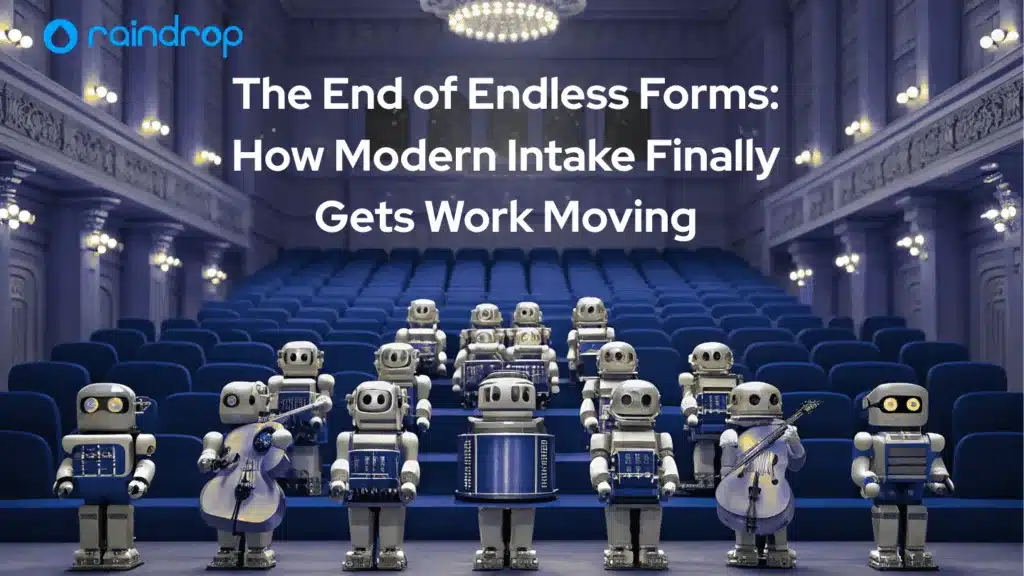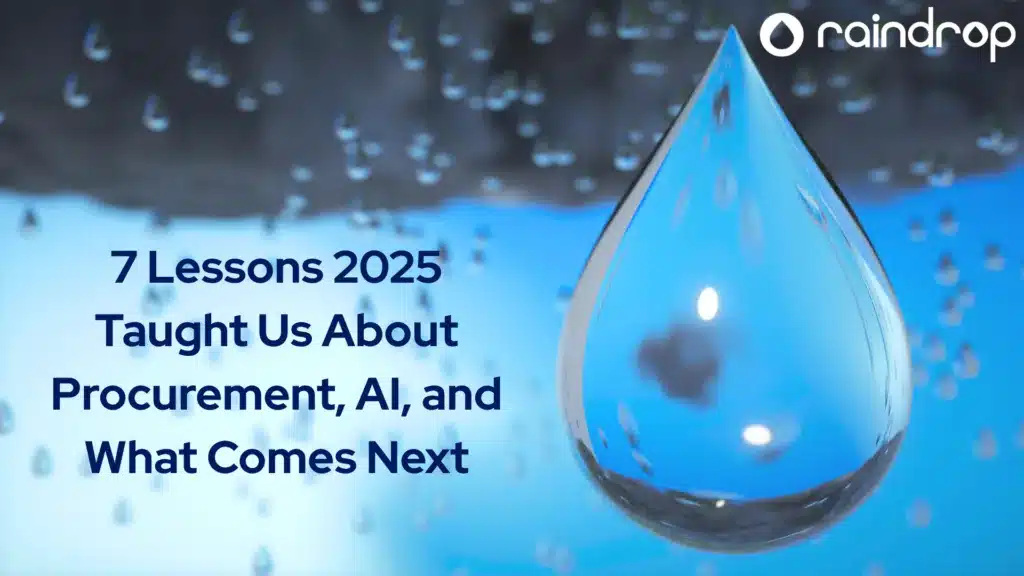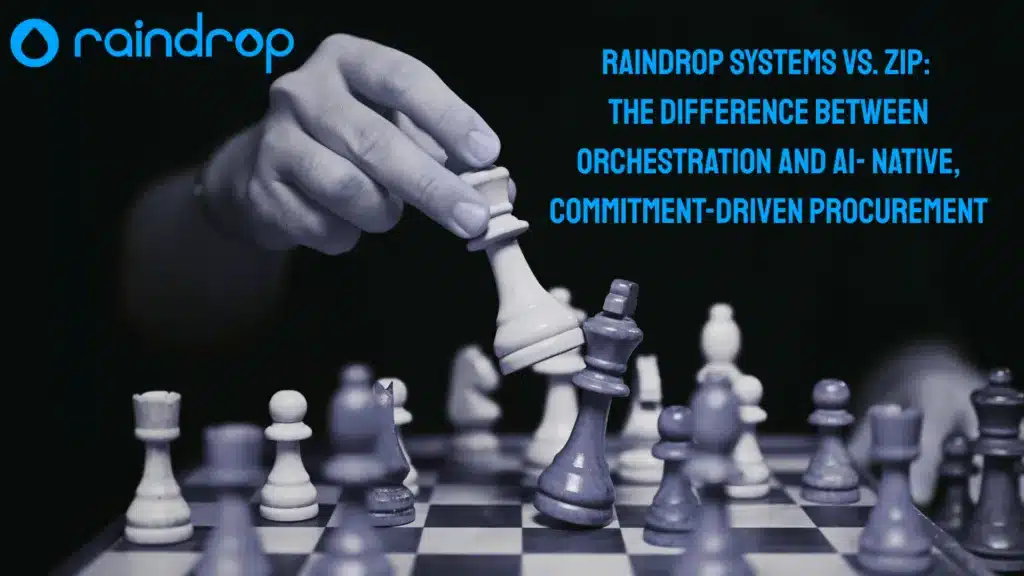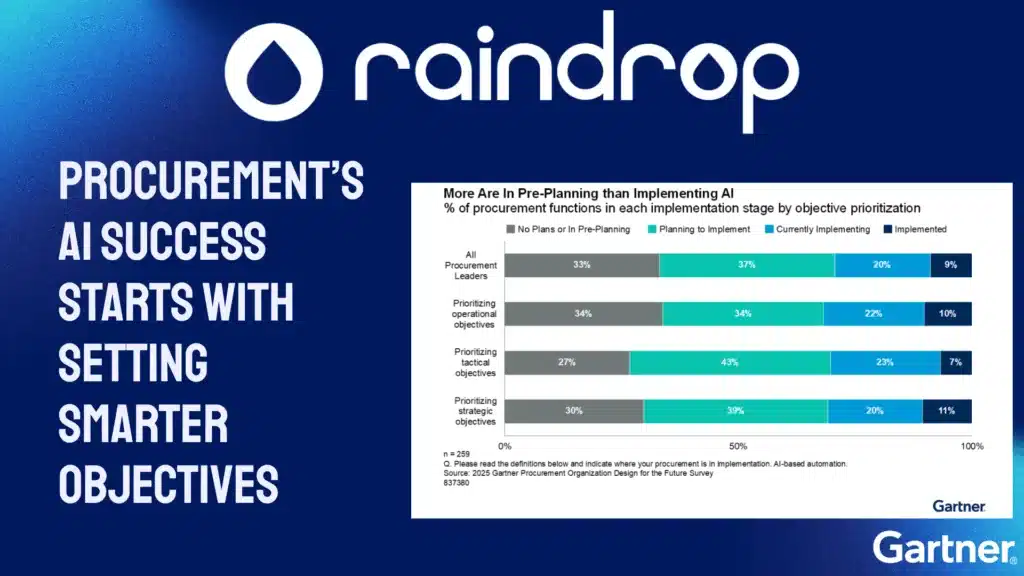The end of endless forms: how modern intake finally gets work moving
Getting a simple business request moving shouldn’t be a test of patience. If you’ve tried to buy a laptop, onboard a supplier, or start a contract and hit a wall of dropdowns and unclear categories, you’re in good company. For many teams, the process is harder than the purchase.


The real bottleneck? It’s the delay from request to approval, thanks to intake systems that assume everyone’s an expert and push urgent needs down the list. Good ideas stall. Untracked spending picks up. Audit trails get messy. The queue gets longer, but users still see prompts for cost centers and supporting documents nobody can find.
Some organizations are deciding that enough is enough. When an intake request is easy, meaning it’s clearly worded and fits the way people actually work, things move faster. Requests get to the right place, the confusion drops, and usable data flows in. Teams spend less time chasing processes, and real work starts on time.
Orchestration: More than just routing. it's team work on autopilot
This shift happened for a reason. Legacy procurement and finance systems were built around static forms and rigid portals. They were difficult for anyone outside of procurement or finance to use, and they kept departments working in isolation instead of collaborating together.
Want a concrete picture? Intake could mean an employee asking to purchase new software for their team. It might be a manager launching a sourcing event to bring in a consultant, or simply trying to execute an NDA to explore a new partnership.
Sometimes it’s a department lead asking to onboard a supplier so a campaign can meet a deadline. In each case, the system gathers what matters—who needs what, why, and when. Orchestration moves the request forward, lining up approvals, policies, and data from other departments so progress stays on track from start to finish.
Making in take easy means people will use it (imagine that)
Why is any of this valuable? Because most business requests fall apart at the start, not the finish. Intake lets people say what they need, in their own words, even if they’ve never seen a policy doc or chart of accounts. There’s no expectation that users know how systems work behind the scenes. The focus stays on intent—what you’re asking for and why.
This is a shift from old-school processes that catered to power users and left everyone else lost or looking for workarounds. Now, anyone in the company can start a request confidently. No more side emails, late-night spreadsheet hacks, or cobbled-together shadow workflows that IT never sees. When intake is open and accessible, people stop bypassing the process and start using it.
Making it simple at the start also pays off for leadership and operations. You’re not stuck sorting out mystery charges or hunting down missing details later. Leaders actually see what’s coming, spot spend early, and get the full story up front. The busywork goes down. Compliance isn’t an afterthought. Everyone finally gets a grip on what’s moving through the business, instead of playing catch-up after the fact.
Where's the friction? start there, not with a policy rewrite
There’s a big difference between “agentic” AI and focusing on deterministic outcomes that teams use for real control.
Agentic AI is built to reason and act on your behalf. If you set it up with the right signals, it might decide to place an order when supplies hit a threshold, update terms in a contract, or approve a payment — sometimes without any human input. In practice, this means the system is making choices for you, based on a model that you hopefully trained, even if you haven’t told it exactly what to do each time.
As Raindrop is on a path to true agentic agents, we’re working closely with our customers to understand what use cases really make sense. Right now, we’re focusing on deterministic outcomes where you decide what outcome you want, and the system delivers it with full transparency:
- Ask for a draft contract, and it pulls from your approved templates and prior agreements, so you know where every clause came from.
- Ask to make a purchase, and it checks past transactions, current pricing, contract terms, and benchmarks, then gives you a clear approval path.
- Every result is traceable: you see what data was used, what logic was applied, and where the key decisions happened.
The result is predictable, auditable, and fully documented. You keep oversight, with no surprises and no black boxes. This is critical for finance and procurement, where compliance and trust aren’t optional.
How Raindrop makes intake feel painless (seriously)
Someone at your company needs to buy a laptop, and their request makes it to the right place the first time—no guessing, no chasing, no dropped context. That’s Raindrop in action.
Instead of having users wrestle with dropdowns, Raindrop uses a Conversational AI Assistant that simply asks, “What do you need?” Enter your need in plain language, and the platform figures out the right flow, forms, stakeholders, and contracts for you. There’s no guessing which category to pick or who should approve what. Want to generate and route an NDA for a new supplier? One click, and it’s handled.
RainConnect powers orchestration without the common headaches. It pulls in relevant supplier info, checks for risks, lines up approvals, and pushes notifications only when needed. Everything syncs in the background—across regions, systems, and teams—without someone having to play air traffic controller.
That’s why industry experts have taken notice: Gartner has recognized Raindrop in its Hype Cycle for Procurement and Sourcing Solutions four years running, and IDC lists the platform as a leader for Source-to-Pay. When you want fewer headaches and a workflow that just works, this is how you get there.
Ready to see intake and orchestration that works for your business, not just your systems?
Raindrop us a line to see how the right start can change the way your company manages spend, suppliers, and everything in between.






